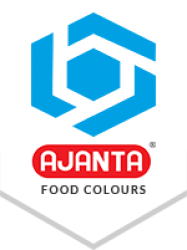_1718023079.jpg)
In the manufacturing industry colors play a very important role. They provide a final bright and appealing look to the products that attract customers’ attention which boosts product sales and increases brand recognition. These colours are prepared in the labs from coal tar or petroleum and are used in many products such as food, beverages, cosmetics, pharmaceuticals, animal feed, confectioneries, etc. One of the colors that is famous and used by manufacturers globally for its cherry-red hue is Red 3 chemically known as Erythrosine dye, which is a trending topic nowadays because of its potential banning by the FDA. This red dye is used in many products to provide a bright and vibrant look. In this blog, we will talk about this Red-3 dye, its history, its uses in the products, related health concerns, why it is on the news of banning, and more.
History of Red 3 dyes
Red 3 colour also known as Erythrosine was first synthesized by a German chemist in the year 1883. At that time this dye was used only in textiles, but later because of its bright and vibrant appealing colour manufacturers started to use it in some other products like food, beverages, and cosmetics. Later these colors were also used in the pharmaceutical industry because they provide stability meaning products do not lose their strength and properties throughout their period of storage and usage which is important for medicines. In the 20th century, this colour became very famous on the global market and it was used by manufacturers in their products, particularly candies, desserts, beverages, and cosmetics on a large scale.
Safety Concerns Surrounding Red 3
In the year of 1990, the US Food Drugs and Administrative a responsible body of the US government that approves and checks the quality of colors in products banned the use of red 3 in some cosmetic products that directly interact with the human body like lipstick and skin care products, and also on some topical drugs such as pain-relief ointments and sprays. FDA did this ban because of research conducted in 1980, that showed red 3 causes cancer in rats and some other animals, and according to federal law, the FDA is required to prohibit any color additive that causes cancer. At the same time, the FDA was promised to ban this colour in food supplements as well but the FDA has not fulfilled their promise. In 2023 California passed Assembly Bill 418, on which they introduced a ban on Red 3 food dye, and some other food additives and flavorings such as potassium bromate (a chemical additive that is used in food products), Propylparaben (another food additive), and brominated vegetable oil used for flavoring in beverages product. California became the first state in the United States of America to pass this bill in its assembly. After California, New York State Senator Brian Kavanagh introduced a bill identical to California's Assembly Bill 418. Shortly after, on May 11th, New Jersey Assemblyman Herbert Conaway Jr. introduced the same legislation. 23 other states introduced the ban on red 3 dye in their assemblies such as Washington, West Virginia, Pennsylvania, etc.
FDA Regulations and Stance on Red 3 Colour
A petition was filed to ban the FD&C Red No. 3 dye, the petition claimed that according to the Delaney Clause, a law from 1960, says the FDA cannot approve a color that shows to link cancer. The FDA states no evidence clearly shows that FD&C Red No. 3 dye causes cancer in humans as it does in rats, and these animal test reports are not very relevant to people. Consequently, the FDA did not ban No. 3 and it is currently approved for use in food, beverages, candies, dietary supplements, and drugs that are taken orally and the FDA is actively reviewing this petition. Some colour additives including FD&C Red No. 3 are checked before use in the products by chemists of the FDA and they ensure that the color meets all the regulations imposed by the FDA or not, and then approve the color for use in the products this process conducts with every batch of FD&C Red No. 3. The FDA properly checks all other factors as well like the quality of the color, how much the colour is used in the product, and more.
Conclusion
Red 3 or FD&C Red No. 3 is in the debate after a petition was filed to ban this food additive. Red 3 dye has been widely used in various industries because of its vibrant and appealing color for a long time, but the research that was conducted in 1980 shows red 3 causes cancer in rats. FDA is actively reviewing the petition and currently does not impose any ban on the color. FDA said manufacturers should follow all the guidelines while using colour as they did before, including ensuring that the color is of high quality, FDA-approved, and used in the amount recommended by the FDA.
If you are a manufacturer and looking for colours that fulfill all the guidelines imposed by the FDA you can consider Ajanta Food Colours. The company manufactures FDA-approved food colors for a wide range of applications such as food, beverages, cosmetics, pharmaceuticals, animal feed, personal and home care products, confectioneries, and more, with over 75+ years of legacy. Ajanta Food Colours exports its colourants globally and fulfills all the colour-related requirements of its clients.
Ajanta Food Colours has received various awards and certificates for its premium quality colors from the Indian governmental authorities as well as from the countries where the company exports its colorants. Some of these awards and certificates include The Arch of Europe Award, the Bureau of Indian Standards (BIS) Award, certifications from The Food Safety and Standards Authority of India (FSSAI), the US Food and Drug Administration (US FDA), as well as Halal, Alcumus ISOQAR, Star-K Kosher, Food Safety System 22000 (FSSC 22000), and ISOQAR certifications, among others.
To know more about Ajanta Food Colours and its FDA-approved colorants, please contact us.




